The International Quilt Museum in Nebraska recently ran a “Modern Meets Modern” challenge where makers were invited to create a 16″ x 16″ mini quilt from several possible antique inspiration quilts. After initially thinking I wasn’t going to enter, I decided I wanted to make a mini after all, and Spaghetti Junction is the result, and my final finish for 2021!
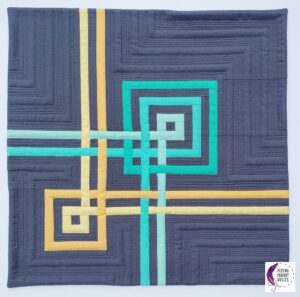
This mini is based on the Carpenter’s Square inspiration quilt. As it happened, this is a design I’d already created after flipping through my quilt block encyclopedias earlier this fall. I’d been working on a design for another project (more on that soon!), and this one didn’t make the cut for the final quilt, but it was my personal favorite out of that batch. So the Modern Meets Modern challenge was sort of a fortuitous excuse to make this design after all.
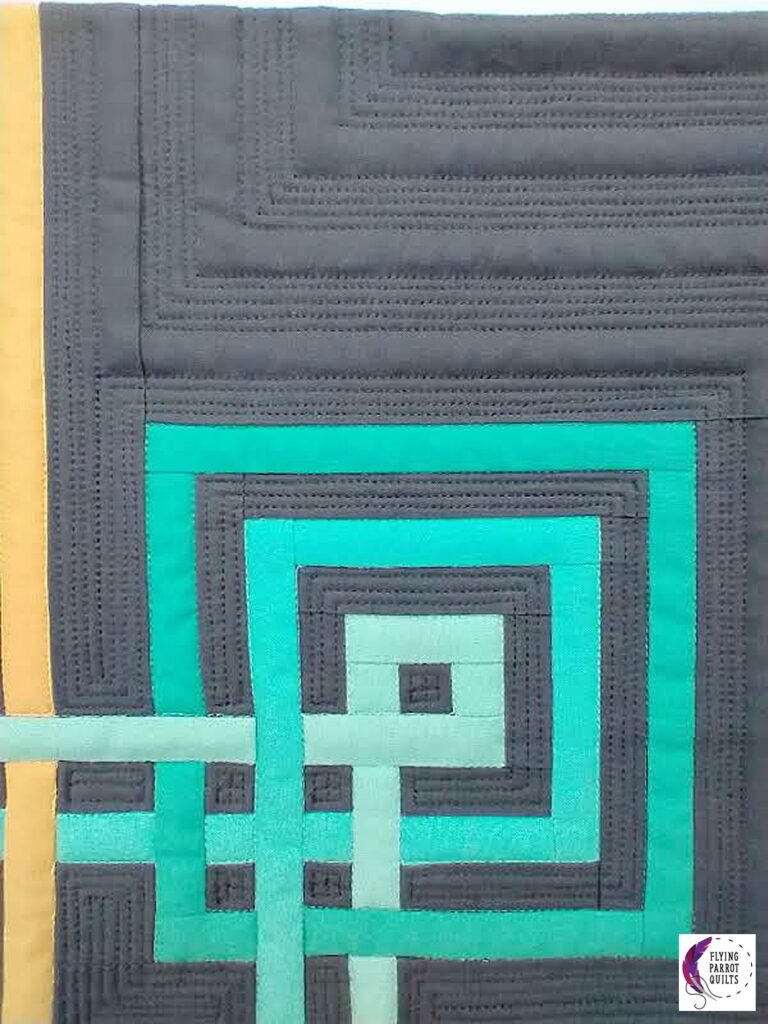
The strips are ½” finished. Figuring out how to put them together was a bit of a challenge; because they are pretty small I decided I’d rather not break them up and so this quilt is constructed with a whole lot of partial seams.
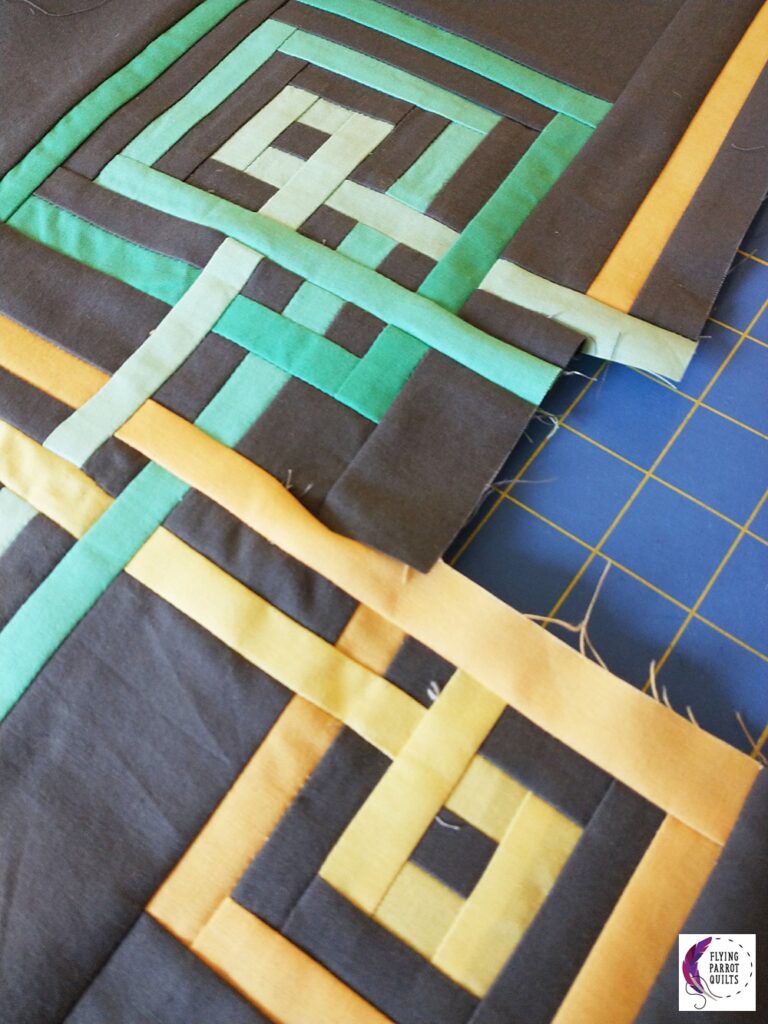
Backing & Quilting
I’m trying to use the fabric I have, especially all the random fat quarters I’ve accumulated over the years, and so the backing on this is pieced. I wanted to trim the mini after quilting, and as a result the top was just a little too big for just a single fat quarter. I chose a couple prints that I thought complemented the shapes and colors in the quilt top well.
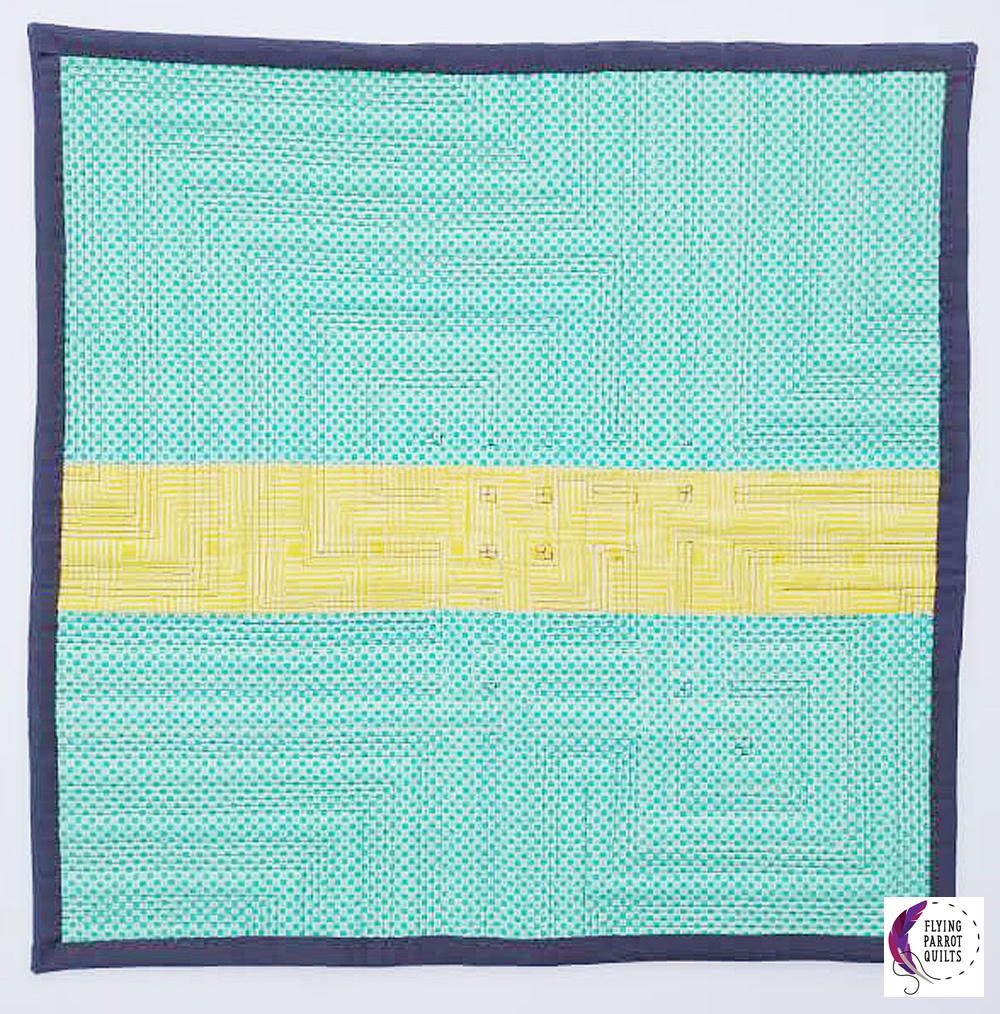
Although I often do mini quilts on my domestic sewing machine, I quilted this on my longarm. It just about fit entirely within the available throat space, and I wanted to use my channel locks to keep the lines straight.
I left the colored bits unquilted, and also included some unquilted ½” strips in the negative space to echo the piecing. The rest of the quilting is ⅛” apart.
You can see the quilting particularly well on the back.
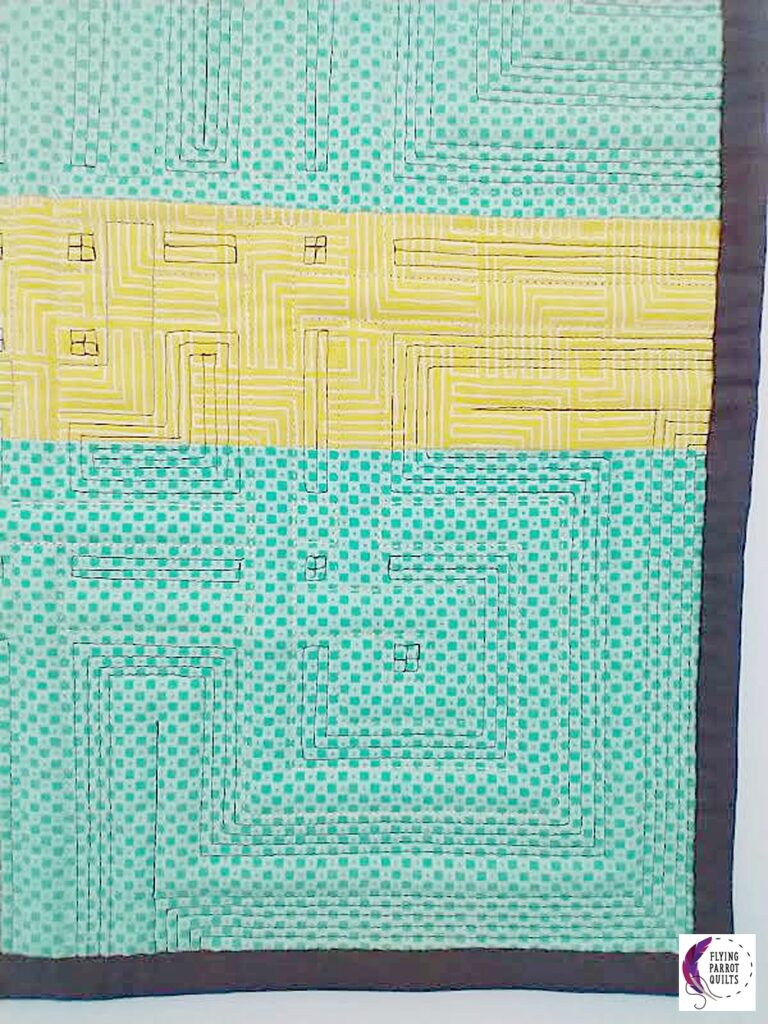
Edge finish
I finished the quilt with a facing, which I seem to do almost as often as a traditional binding. For quilts like this, where there are strong elements right at the edge of the quilt, a binding often feels like it would cut off the visual motion too much. So in those cases, I often opt for the facing, which doesn’t create a border at the edge of the quilt like a traditional binding. (If you haven’t tried one of these before, I’ve got a video on how to apply a facing to your quilt!)
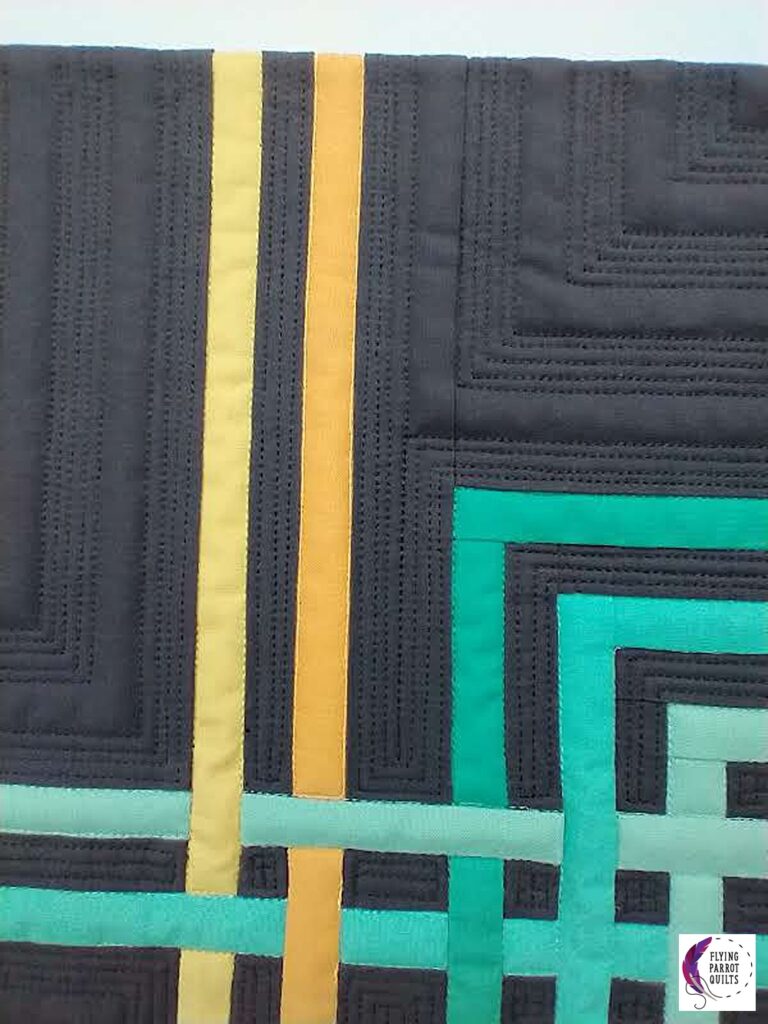
Let me know your thoughts on a pattern!
I’m not sure when the Modern Meets Modern challenge winners will be announced, but I’m very happy with the way this mini quilt turned out. In fact, I like this design so much that I am thinking of making a larger version/pattern in different colorways. But I’m curious, if I make this a pattern, how would you feel about partial seams in a quilt pattern? Yea or nay? Leave me a comment and let me know!
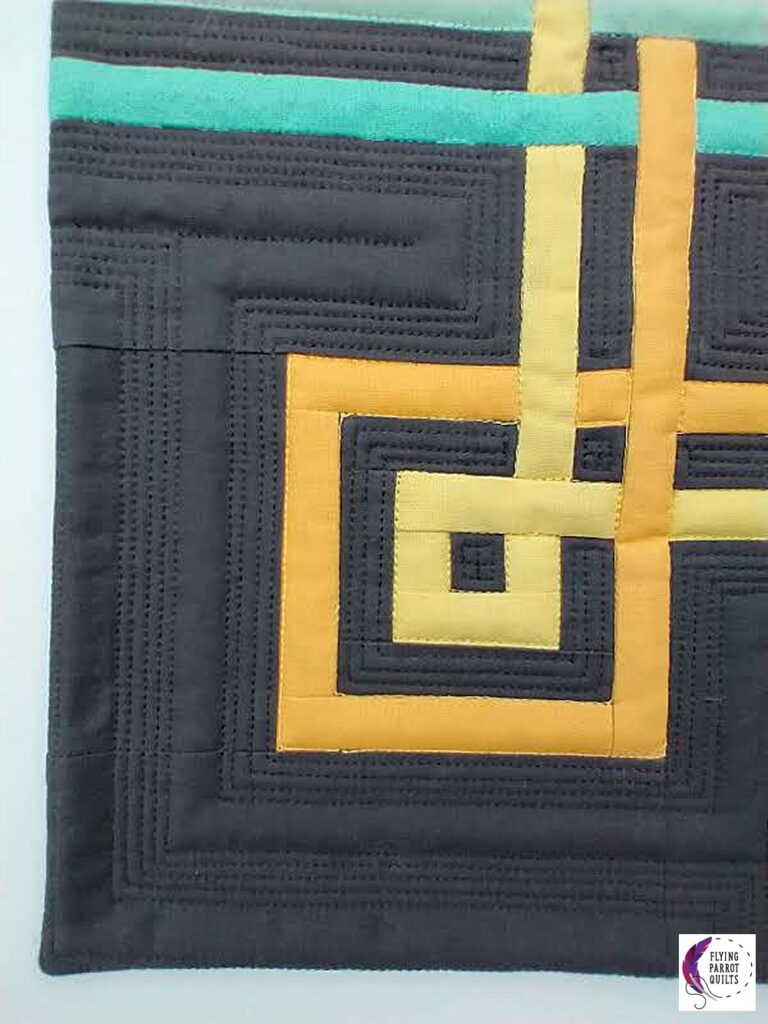
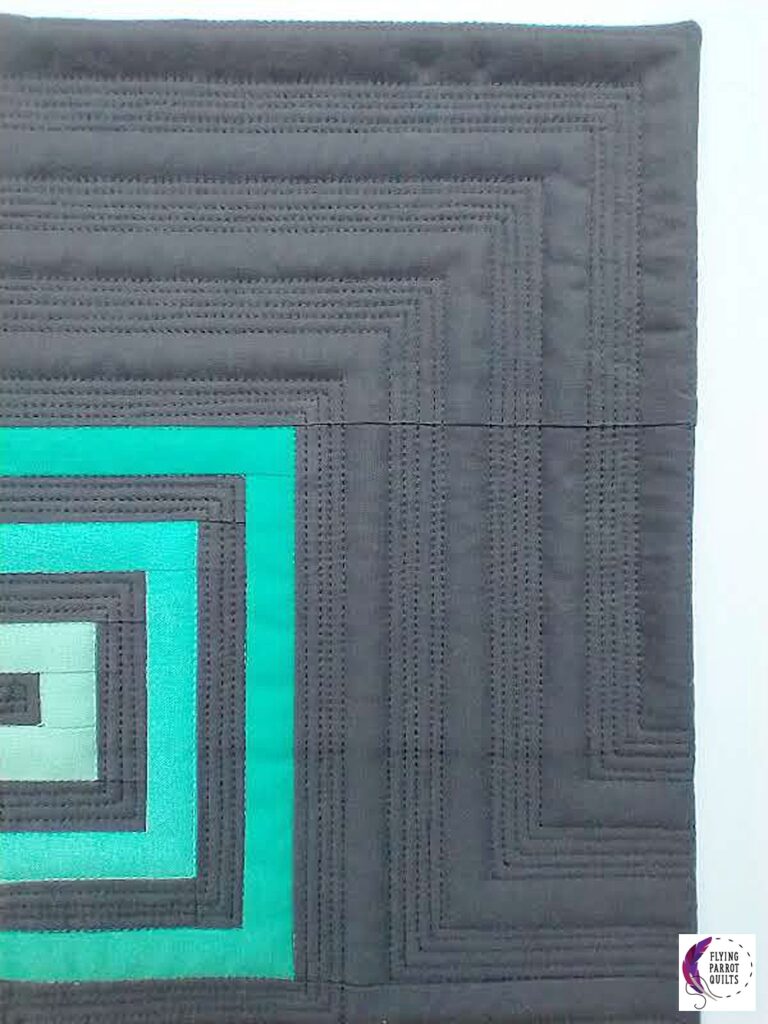


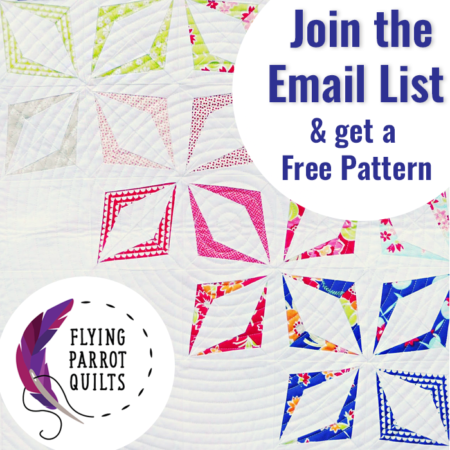
Yay
I love your pattern. And I’ll try anything once, so if partial seams is the easiest way for this pattern, I’d give it go. I don’t think I’d make a very big one though. I’ll be looking at your facing video next. I’m almost done with a small paper pieced project that I’m thinking about facing instead of binding.
I think partial seams are one of those techniques everyone thinks sounds really scary but is easily done once one tries them. I have actually made a lap quilt using partial seams. And believe me, if I can do it, anyone can do it!
Love the block. Love how linear it is. Love how the long lines aren’t broken up. Love the colors as usual!
This is stunning, Sylvia! Those partial seams really paid off!
I think “partial seams are hard!” is a myth. They’re not hard; you just have to pay attention. You have to focus on your sewing rather than daydream while you string piece. But that’s just my opinion.😊
Love this quilt ! And yes I’d be up for a lap size quilt with partial seams. I’ve done them before and they’re not difficult to do if they are well explained as the previous writer stated.
I believe that partial seems get a bad rap! Once you have good direction on how to complete them, they are not hard to accomplish. You always provide great directions for your patterns, so I believe that anyone who wanted to give it a try would be successful!